Do Garages Count in Square Footage Calculations?
Author: Rick Worst | Editor: Omar Alonso
Review & Research: Jen Worst & Chris Miller
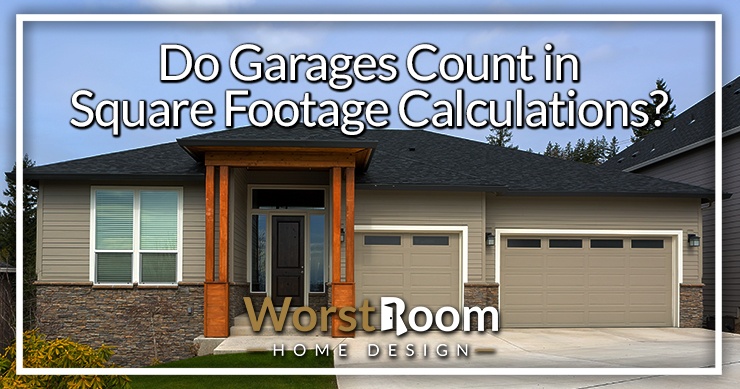
Do you know your home's square footage? It's an essential calculation to understand if you're selling or renting your property. The measurement includes all livable spaces in your home, but do garages count in square footage calculations?
As a short answer, don't include the garage area in the calculation. However, there are some exceptions to this general rule. An unfinished garage doesn't count toward the livable space in your property, but finished garages do. We know it sounds complicated.
Despite the garage not being included in most calculations, it still counts towards the appeal of your property in the eyes of real estate agents, renters, and prospective buyers. We put together this post to give you an idea of how to properly assess your garage as a livable space and how to calculate the square footage of your home.
What Counts in a Home's Square Footage?
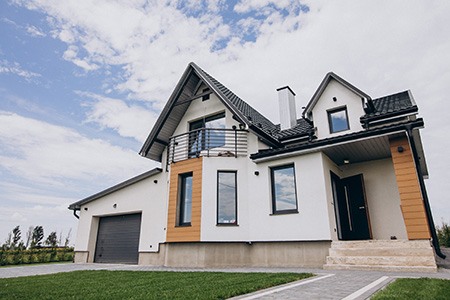
The typical square footage measurement includes all livable spaces on the property. We define livable areas as finished flooring, walls, and ceilings meeting specific height requirements. This definition will vary, depending on the home's location within the municipal boundaries.
A room needs a minimum ceiling height of seven feet to qualify as a livable space. Rooms with cathedral or vaulted ceilings and irregular shapes might be higher than this, making them an exception to the rule. If that's the case, at least half of the room must fall within the seven-foot rule.
The "net livable square footage" is a more specific measurement, representing the exact amount of space falling into a category of comfortable usage in the room and home. It's important to note this space doesn't include window frames and other smaller areas of the house.
Prospective home buyers are interested in the net livable space in a home to get an accurate valuation of the property. Livable square footage is the more specific measurement, and "floor area" is a more broad definition of measurement used in commercial real estate valuations.
The floor area represents the entire space available in the building, not only livable space. This metric assist with assessing the building size related to the property size when valuing the property.
Typically, the following types of rooms in a house are included in calculating a residential property's square footage:
- Kitchen
- Family room
- Dining room
- Living room
- Bedrooms
- Bathrooms
- Home office space
- Closets
- Laundry
- Sunrooms
- Finished Basement
If you choose to renovate unfinished rooms, it could add to your home's livable square footage, increasing your property value. So unfinished garages don't count, but if finished can count towards the square footage. So, do garages count in square footage calculations? It depends on if they're finished or unfinished.
Exclusions in a Home's Square Footage
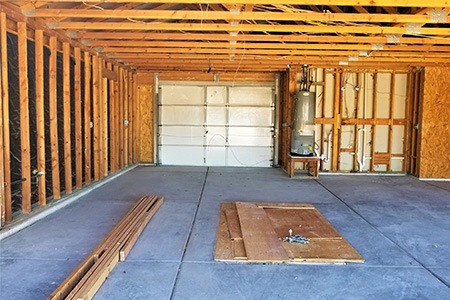
The square footage calculation doesn't include unfinished areas around the property. These spaces are usually not counted in the measurement:
- Unfinished basement
- Attic space
- Unfinished garage
- Unfinished porch
- Unfinished sunrooms
Basically what does count is “livable space,” which is any finished indoor common space that is used daily for household activities.
Does the Garage Count Toward a Home's Square Footage?
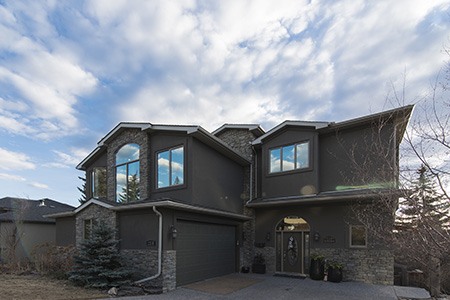
Homeowners, realtors, and contractors can assist you with calculating the square footage of your home. Suppose you're planning on renovating, selling, or renting your property. In that case, the measurement can come in handy for several reasons, such as giving accurate data on the size of the home or fitting new flooring.
When calculating the square footage, you'll need to exclude unfinished areas around the property, leaving out spaces like the attic, unfinished garages, basements, porches, and sunrooms. Since these areas don't meet the living space definition, they're excluded from these calculations.
To have any type of garage count as a living space and contribute to the square footage calculation, it needs to qualify as a living space according to the definition we've discussed. A detail that you may have not considered is this needs to be an attached garage with a door leading into the home.
Does A Finished Garage Count as a Living Space?
A finished garage counts towards the total square footage of a home if it's finished, qualifying it as a living space. The garage must have finished flooring, ceilings, walls and flooring, and accessibility, such as locking doors, to be eligible for inclusion in the calculation.
In some cases, the garage must have insulated ceilings and climate control to qualify as a finished space. Finishing your garage can greatly contribute to the property value, and you don't have to spend much to get it to meet the criteria for a livable space. There are a lot of pros and cons of insulating a garage to consider, but the pros far outweigh the negatives.
However, renovating an unfinished garage requires homeowners to apply for the proper permits, and those costs add to the budget for your project. You'll need to take into account all these expenses when planning the conversion.
Does a Home's Floor Area Include an Attached Garage?
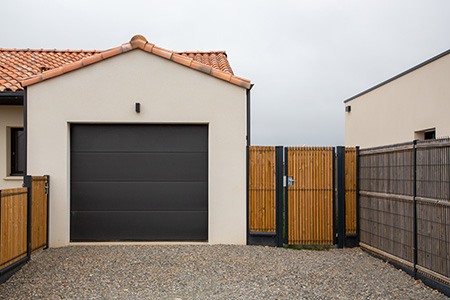
As mentioned, the floor area is a metric more commonly used in commercial real estate evaluations, not residential properties. However, some real estate agents and homebuyers use it as a secondary measurement when evaluating the property's potential.
The floor area metric includes additional elements other than the livable square footage calculation. This measurement doesn't differentiate between unlivable and livable spaces. It includes everything in the physical building. However, elements like swimming pools and sheds don't contribute to the calculation, but attached garages do.
An attached garage is an easy space to convert into a livable environment. They're attached to the main building, have electricity available, and you can connect them to the home's central HVAC system without much effort or interference to the existing unit while sealing up your existing garage ventilation options. As such, many real estate agents choose to include them in the measurement of a home's square footage.
Does a Home's Floor Area Include a Detached Garage?
An unfinished or finished detached garage does not count toward the floor area of a home. These structures don't count toward the property's total livable square footage calculation. However, detached garages are an added feature to a home, raising the overall property value like an unfinished attached garage would.
How Do You Calculate Square Footage?
There are several methods for calculating a home's square footage.
The most common method is multiplying the length and width of livable spaces (rooms). You can split rooms into segments to make them easier to measure if they're large or have irregular shapes.
Add up all your individual calculations, and you have the home's total square footage.
You can usually complete this task using builders measuring tapes. However, we recommend using a laser measuring device for optimal accuracy with the job. They're the best choice for measuring irregular rooms.
Understanding Square Footage & Lot Coverage
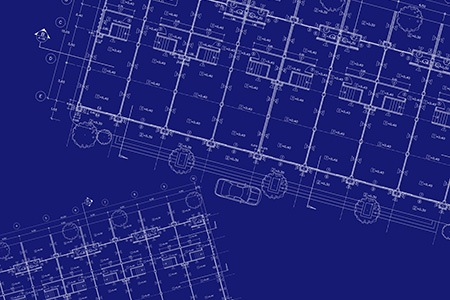
Lot coverage presents another way to calculate a home's square footage. Many cities and towns have limitations on how much of your property you can develop into livable space. For example, if a city allows you to build on 30% of the property, a 10,000 sq. ft. lot enables the homeowner to build on 3,000 sq. ft. This is often called floor area ratio (FAR).
This calculation includes the square footage of the garage. Lot coverage usually refers to all structures on the property, so non-permanent structures like a shed and detached garage will be included in this measurement. This square footage measurement doesn't use livable space in the calculation.
To determine the home's square footage "footprint" for the lot coverage measurement, you'll measure the length of the house's exterior walls.
However, you don't measure from cantilevers or siding projecting from the side; you measure from the base where the wall meets the ground, hence the "footprint" measurement. The upper floors of the property don't count toward its footprint.
So back to the question of do garages count in square footage calculations. Unfinished ones will contribute to the floor area square footage calculations (commercial considerations), but won't count as livable space and thus won't increase the square footage of the home (residential considerations).
FAQ’s Regarding Garages & Square Footage
Here are a couple of questions that always come up when when talking about garages and square footage. We always end up discussing the standard garage sizes, so let’s cover that now.
What’s the Square Footage Measurement for a Standard Single Garage?
Usually, a standard single garage measures around 308 square feet in total surface area. However, the average range for these structures can vary between 240 and 384 square feet. Some garage structures are larger than others. They may feature attachments like laundry rooms or secondary storage areas for gardening equipment or fridges.
What’s the Square Footage Measurement for a Standard Double Garage?
Most double garages have a floor space that's bigger than two single garages. For instance, the average square footage of a double garage can vary from 440 to 624 square feet.
In most instances, a double garage will be larger if it features two doors instead of a single one. Many of these structures include secondary storage areas of rooms, such as laundries. These areas count toward the total square footage of the double garage.
Key Takeaways for How Garages Play Into Square Footage Calculations
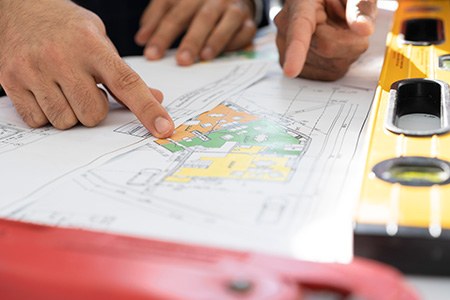
Let’s recap the main points above to reemphasize what we’ve learned:
- Square footage is a measurement that homeowners, real estate agents, and contractors use to define the livable space in a property.
- An unfinished garage doesn't count toward the property's total square footage.
- A finished garage, with finished flooring, walls, and ceiling, counts as a livable space, adding to the home's square footage.
- In some cases, the garage will need insulated ceilings and climate control to qualify as a livable space.
- A detached garage doesn't count toward the home's square footage. However, it will add to the property valuation because it offers utility to the homeowner.
- Attached garages are usually easy to finish. They come wired with electricity, and it takes little effort to connect them to the home's HVAC system.
- Outdoor sheds, swimming pools, or any other structure on the property that doesn't have a foundation don't count toward the home's square footage calculation.
- Finishing your garage is a relatively easy and inexpensive renovation project, and it adds to the property value considerably over an unfinished garage.
Thankfully, this ends up being a fairly easy concept to understand, and is a good and simple way to increase the value of your home.
So, Does a Garage Count in Square Footage Calculations?
As we’ve said, an unfinished garage will not count as livable space and thus won’t be included in square footage calculations. You can finish a basement by insulating it, bringing in drywall and proper flooring, and tying it into your air conditioning system. Then and only then do garages count in square footage calculations. This can be a great boon to you if you’re considering selling eventually.



